Find silky smooth Guangxi style 'cheung fun' in Kepong's Restoran Three Gold No 1 Food Court
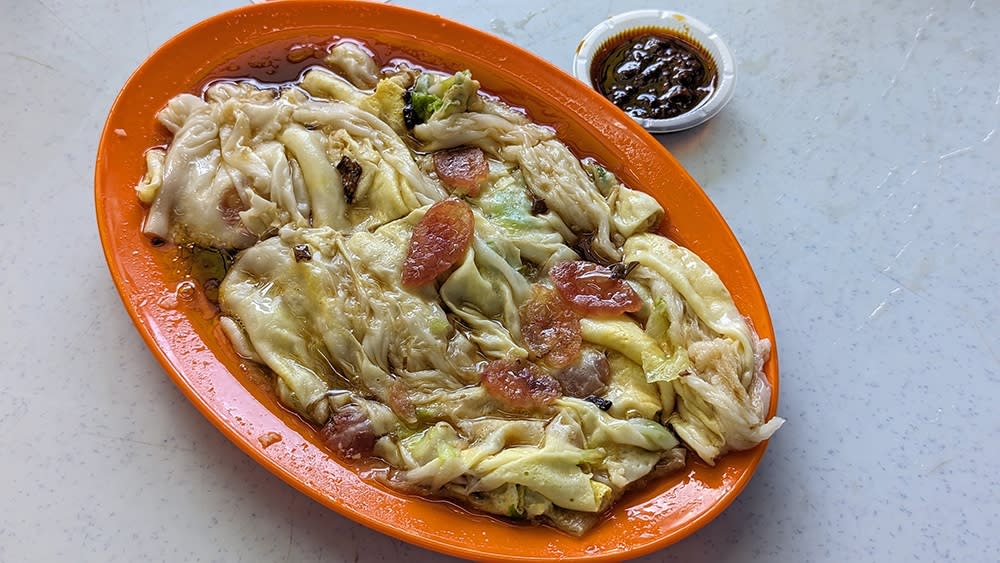
KUALA LUMPUR, Jan 21 – The Cantonese rice noodle roll, or cheung fun, sometimes called chee cheung fun for its resemblance to pork intestines, is hugely popular in Malaysia.
It can be found – usually stuffed with shrimp or char siu – in any dim sum joint that takes itself somewhat seriously.
But it has also become so entrenched in Malaysian cuisine that it’s spawned regional variations: in Penang, it’s chopped into thin noodle-like slivers and served with hae ko, a molasses-like shrimp paste; in Ipoh, the same strips are tossed in a mixture of soy sauce, shallot oil and sesame oil before being topped with har mai, dried shrimp.
In the food court behind the Kepong Baru morning market is a stall selling cheung fun that also resembles a speciality from neighbouring Guangxi, which the locals call bojifen.
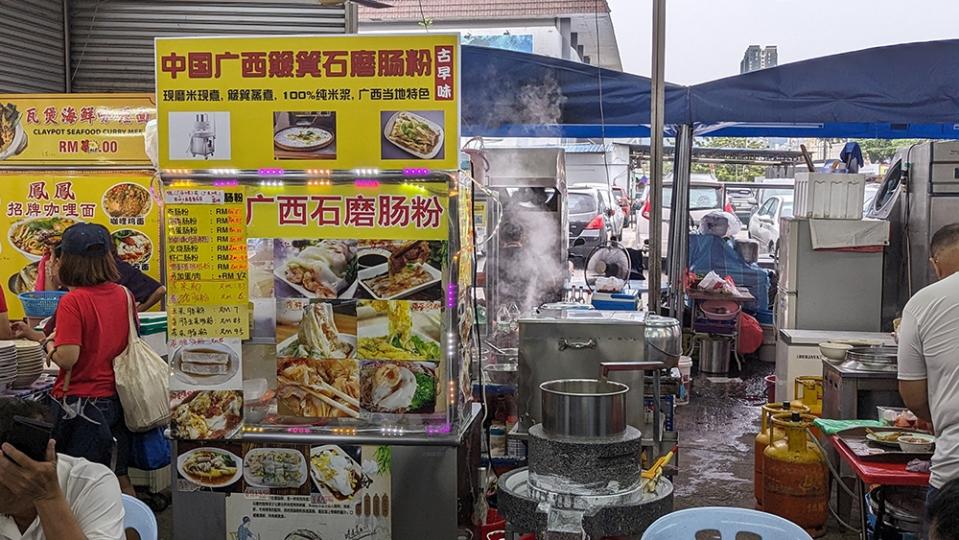
Look for this stall, situated close to the entrance in the middle.
It’s also a rice noodle roll – the main difference is that it’s spread on a traditional bamboo dustpan before steaming, which is where it gets the "bo ji” portion of its name.
The stall is run by a woman hailing from Guangxi, who is assisted by her husband.
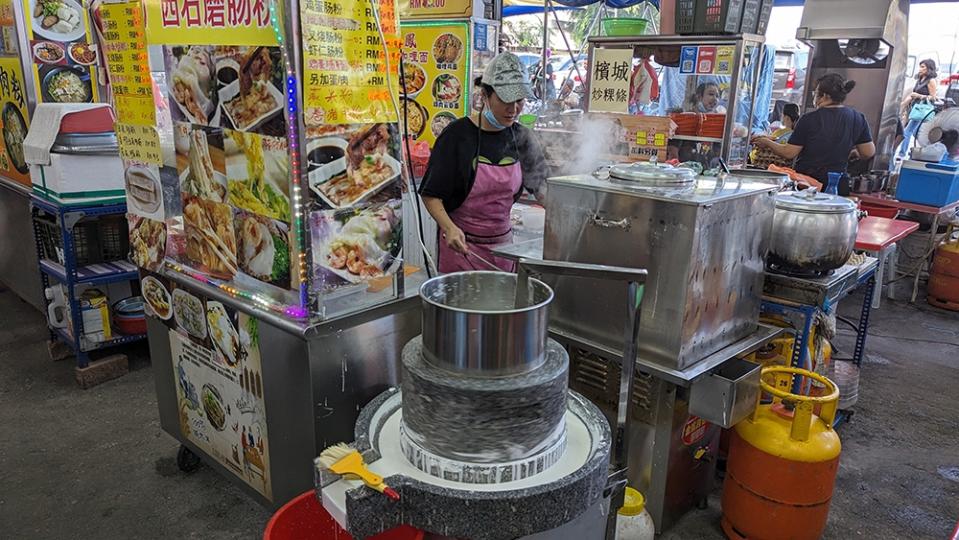
The stone mill with which the 'rice milk' is freshly made. Not something you see every day by a stall.
The "rice milk” for the rolls is made fresh and on-site in a stone mill right next to the stall, which is collected and spread on a shallow bamboo "dustpan” to steam.
They are served in two different styles: the "Guangxi style” is a light sauce with minced garlic and tomatoes, while the "Guangdong style” is the more familiar preparation of seasoned soy sauce.
A variety of fillings are offered, including minced pork, egg and corn, all of which are apparently typical of Guangxi, while the more familiar Cantonese offerings of char siu and shrimp are also available.
Over multiple visits, I had the chance to sample a multitude of fillings and preparations, but one thing stood out across the board.
The texture of these rolls was both evocative and yet quite different from cheung fun that most will be used to.
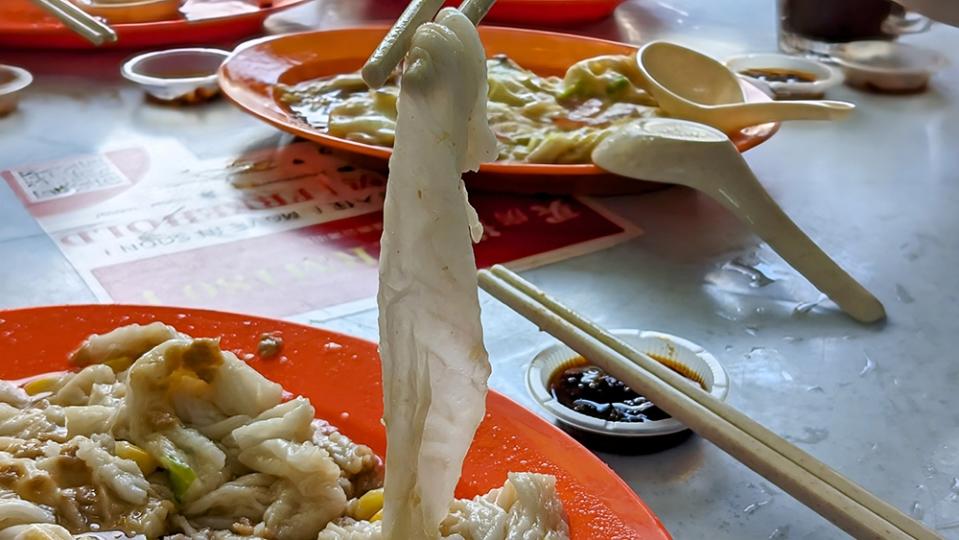
The delicate consistency of the rice noodle rolls is something to celebrate.
They’re silky smooth, but not slippery like their more delicate Cantonese counterpart, and the ripples are indicative of just how ethereal and soft each roll is.
When you pick a sheet up and hold it against the light, it resembles a cloudy film that seems to want to break under its weight, and yet the tensile strength keeps it in a perpetual state of hanging on by a thread.
Minced Pork with Egg (RM9.50) and Minced Pork with Corn (RM9) were among the best I tried that were served in the "Guangxi style”.
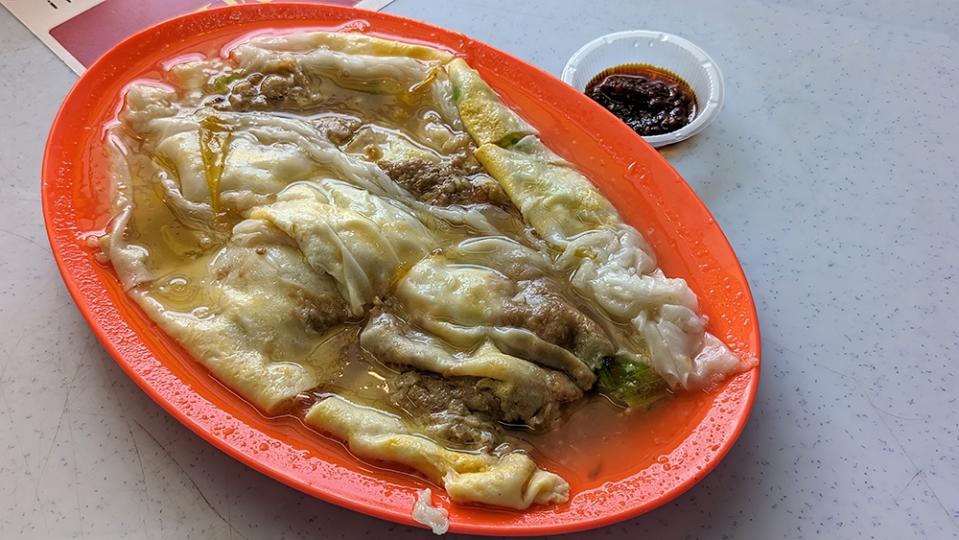
Minced Pork and Egg Cheung Fun served 'Guangxi style'.
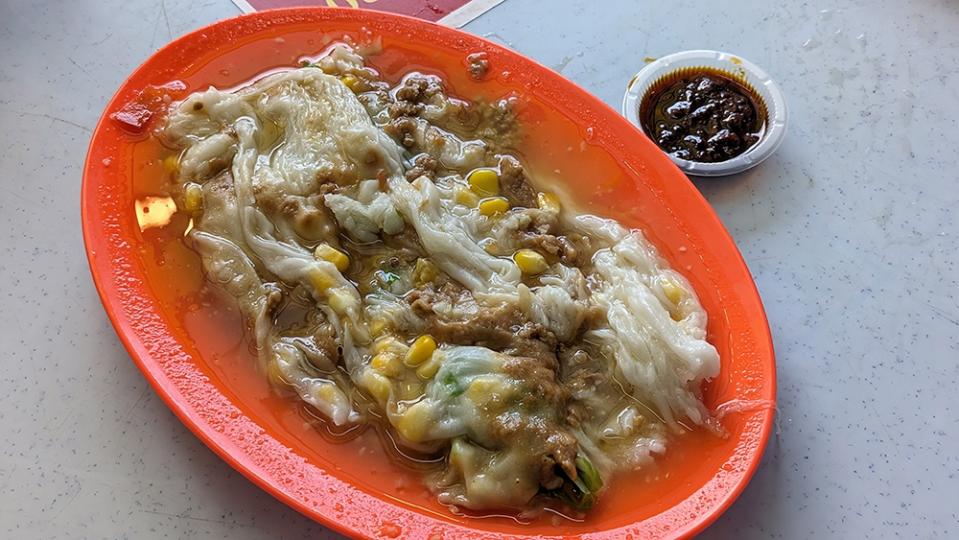
Minced Pork and Corn Cheung Fun served 'Guangxi style', a unique and delicious choice of filling.
The sauce has the slightest touch of soy sauce, flavoured predominantly with minced garlic and fresh tomatoes.
They bring a hint of sweet and sour to the flavour profile, which according to the stall owner, is popular in Guangxi.
When steamed this way, the mince turns into something of a smooth paste, while the egg is spread into thin sheets that are wrapped snugly inside the rice noodle rolls.
Corn was an intriguing choice of filling that I ended up liking best – the soft rolls paired with the pop of crunchy bits of corn were a wonderful contrast, and the sweetness of the corn coaxed out plenty more sweetness from the tomatoes in the sauce.
The plate of chilli oil on the side provides a welcome touch of heat and savouriness that ends up lifting the whole dish.
Even the classics taste a little different here.
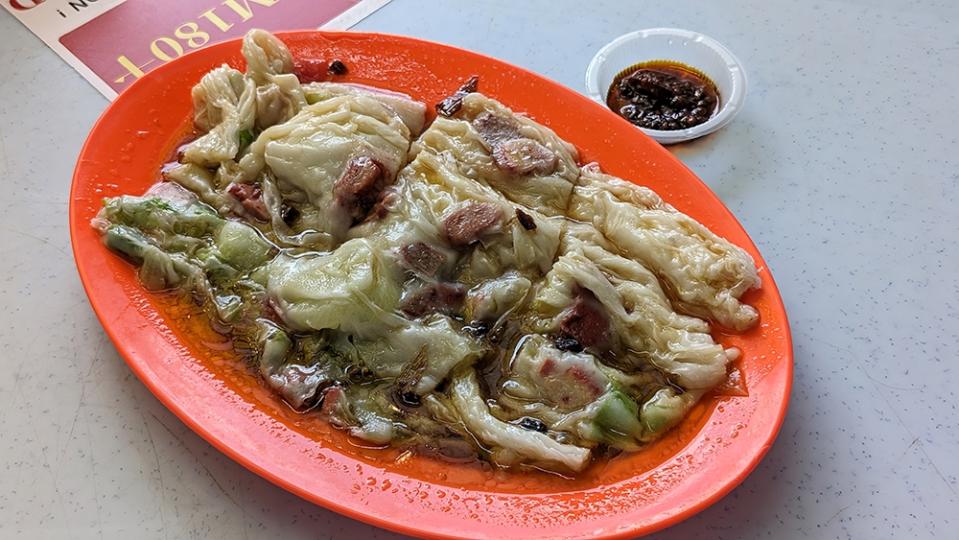
Classic Char Siu Cheung Fun served 'Guangdong style'.
Char Siu (RM9.50) and Lap Cheong (Chinese wax sausage) with Egg (RM10.50) tasted best when served in the "Guangdong style”, which consisted of a seasoned soy sauce base that’s also topped with shallot oil.
The result is the tried and tested combination of silky rice noodles, sweet and savoury sauce and slightly sweet bits of meat that we know and love, with the cherry on top being a dollop of spicy chilli oil.
I had tried one with Char Siu served in the "Guangxi style” and found it disappointing – the inherent sweetness of char siu clashed with the tomato in the sauce, which was representative of something I noticed: the "Guangxi style” sauce seemed to favour cleaner, lighter-tasting fillings whereas the "Guangdong style” sauce was savoury enough to stand up to stronger-tasting fillings like char siu and lap cheong.
Meals where I leave not just satisfied – but with the feeling of having my horizons broadened – are my favourite. In this job, I have the privilege and opportunity to experience meals like that on occasion, and this was, without a shred of doubt, one of the very best.
Restoran Three Gold No 1 Food Court @ Kepong Baru Morning Market
55, Lorong Bangau 2, Kepong Baru, Kuala Lumpur
Open Tuesday to Sunday, 8am-2pm
*This is an independent review where the writer paid for the meal.
*Follow us on Instagram @eatdrinkmm for more food gems.



